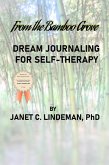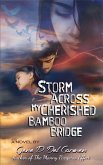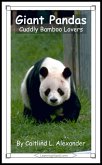The Book of Bamboo is designed as a step by step procedure to enable the student to learn technique in a more detailed and organized manner. It is a practical handbook for the student of Chinese brush painting. It starts with an outline of the appreciation of Chinese Calligraphy. In the oldest written sources, tracings in the nature of emblems, in connection with divination were used to serve as Words (). When those words came to mean the language of a poet, they still remained in pictorial forms, but on the other hand, when they came to mean the real "forms" in painting, they retained some of the earlier sense of "semblances" and "emblems" which nicely defined their function in a composition.
Next, Professor Ju explains the use of the basic tools for Chinese brush painting - the ink stone, the ink stick, the brush, and the paper. These treasures are considered as priceless holy things and are treated with reverence and respect. In Part II, he demonstrates the basic formations of stem, knots, branches and leaves, and dealt with each of them as a sole pattern.
Finally, in Part Ill, Grouping of Stems, Branches and Leaves, Professor Ju explains how to paint more than one stem together for the primary composition of a bamboo painting, how to group branches for those stems and lastly, how to put clusters of leaves which are all related to them. According him, the first principle of a bamboo composition is, the four parts of the plant should be considered in the following order: stem, knot, branches and leaves.
Dieser Download kann aus rechtlichen Gründen nur mit Rechnungsadresse in A, B, BG, CY, CZ, D, DK, EW, E, FIN, F, GR, HR, H, IRL, I, LT, L, LR, M, NL, PL, P, R, S, SLO, SK ausgeliefert werden.









